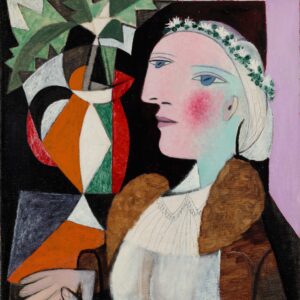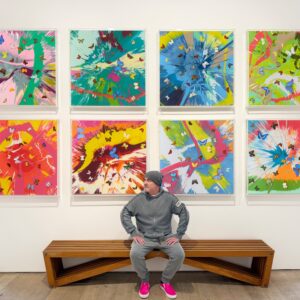The School for Curatorial Studies Venice is back with the project ‘Whatever it takes’ — a three-day barter market. Visitors will be able to secure the exhibited artworks at one condition: no money is allowed. The artists, instead, made some interesting requests in exchange for their creations. The event, conceived in January 2020 before the pandemic, excludes the use of any existing currency to make evident what became clear to many of us during the months of the lockdown: the essence of society derives from a series of concrete needs and from the interdependence between people.
 Barbara Baroncini, ‘Lovesong’, 2017-2020, credits Barbara Baroncini
Barbara Baroncini, ‘Lovesong’, 2017-2020, credits Barbara Baroncini
There is beauty in seeing the creativity of the artist expanding beyond the physical limits of the work; beyond the monetary value they are arbitrary assigned by someone else. These bartering requirements, I am sure, will be remembered for much longer than a price tag. Whereas we are used to seeing artworks being used for wishful profit-only, what ‘Whatever it takes’ wants to create is an enduring relation between creator and acquirer. Anna Marzuttini, indeed, demands for her work that you plant a tree in your garden an ‘never cut it off’. There is also an element of trust, here, which should not be underestimated. To buy the work proposed by an artist-collective formed by Giovanna Bonenti, Nina Ceranic, Silvia Faresin, Manuela Kokanovic, Margherita Mezzetti, Matilde Lucini e Maddalena Tesser you will have to ‘find a name for the collective’ itself. Your idea, your name, will not disappear with a shake of hands but will, instead, remain forever with these artists. As the collective states, this ‘aims at establishing an intimate dialogue with the public by way of giving this public the very duty of naming the group, obtaining our work in exchange’.

Instagram page @whateverittakes_ve/: Giuseppe De Mattia, Decorazioni per Cavalli da Guerra
Other artists asked to collect a series of really funny jokes in exchange for their works. Someone will give their work only if the acquirer can come up with an idea of a title for a future project. Someone else wishes to learn a new language, collaborate with a composer, confront a computer scientist, relocate to an artist’s residence in a location chosen by the recipient, receive a critical text for their own work, produce a work of blown Murano glass with artisans and satiate oneself with a tray of 12 sandwiches, that combats the nostalgia of Venice. These are just some of the requests that artists would accept as an alternative form of exchange for their works.
 Giuseppe De Mattia, Decorazioni per Cavalli da Guerra, acrilico su fotografia stampa XEROX su carta cotone, 30xx45cm
Giuseppe De Mattia, Decorazioni per Cavalli da Guerra, acrilico su fotografia stampa XEROX su carta cotone, 30xx45cm
‘Whatever it takes’ is build on an extensive economical research, particularly inspired by the theories of economists Carl Menger, Ludwig von Mises, Friedrich August von Hayek, John Maynard Keynes, Wray Randall, Warren Mosler, Alex Kampa. This investigation deepened the collective understanding of the ‘reciprocity principle’ and its intended activation as a ‘social glue’, as it is famously analysed in Marcel Mauss’s ‘The gift’. Starting from this sociological research, and prioritising a particular awareness of historical exertions, the project ‘Whatever it takes’ puts the principle of individualism in a dialectic dialogue with an equally fundamental principle – the discourse of ‘community’, ‘state’ and ‘language’ whilst navigating through an artistic community.
 Simone Carraro, Ma di certe bestie possiamo anche fare a meno- gli impatti antropici sugli ecosistemi della laguna di Venezia, 2020, vernice acrilica su carta rosa spina, 50×70 cm
Simone Carraro, Ma di certe bestie possiamo anche fare a meno- gli impatti antropici sugli ecosistemi della laguna di Venezia, 2020, vernice acrilica su carta rosa spina, 50×70 cm
The bartering will take place on the 25-26, -27th of September 2020 at Galleria A plus A, Venice. You can receive updates and more information by following the Instagram page @whateverittakes_ve, sending an email to curatorialschool@gmail.com, or by calling 041 2770466.

The School for Curatorial Studies Venice
The School for Curatorial Studies Venice was founded by Aurora Fonda in 2004 in Venice with the aim of creating an open laboratory for visual arts and all professions related to contemporary art. The Course in Curatorial Practices and Contemporary Arts, now in its 27th edition, addresses both the theoretical side and the practical one – with an experimental approach, culminating in a final event organized by the participating students. The course is an ambitious and stimulating project, capable of opening up a vision of complex world of contemporary art and offering a constructive contribution through the works carried out by the School and its students. Since 2015 it has also activated the Summer school, which brings together participants from all over the world. www.corsocuratori.com
Whatever It Takes
The School for Curatorial Studies Venice at Galleria A plus A (San Marco 3073, Venice, 30124)
25th, 26th, 27th September 2020 @whateverittakes_ve / @curatorial.school









